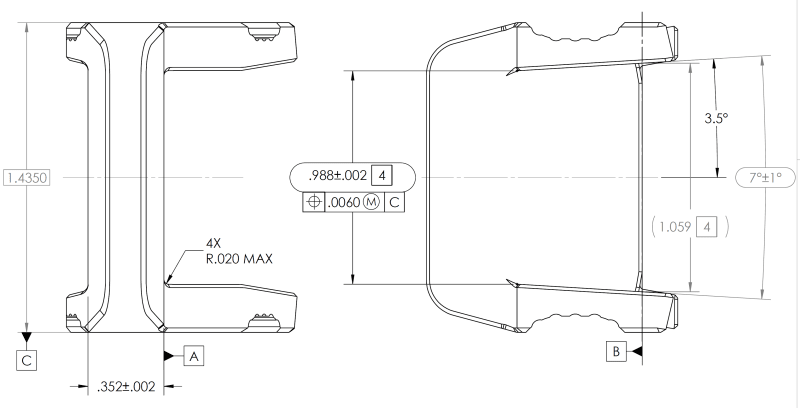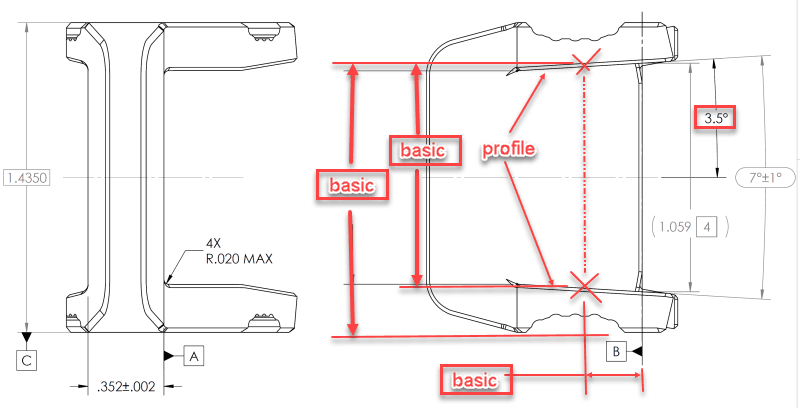
I came across this callout on a drawing I was asked to review. I'm pretty sure the position tolerance on the two opposed edges is not a valid callout and I think I understand how to explain why but wanted to confirm my thinking with some of the experts here. Ignoring the fact that the edges aren't really there on the physical part as they are a theoretical intersection (flag 4) my understanding is that this feature cannot be considered an irregular feature of size as you cannot create an AME. Two parallel planes expanding to the edges would not be constrained in orientation. They could vary up to the angle of the surfaces.
I don't really like how these features are dimensioned altogether but that particular callout has me thinking it has to change to be valid to the standard (we currently use ASME Y14.5-2009). My suggestion would be to use surface profile, potentially a composite profile if some additional location allowance is desired.

